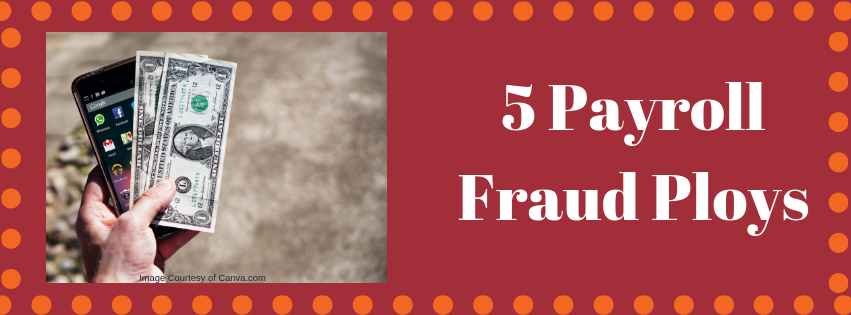You may think payroll fraud to be nearly impossible to accomplish – after all, it’s money that visibly comes out of your account, passes your books, and should be obvious to detect, right?
Wrong. While payroll fraud is more difficult to execute, unfortunately it’s complicated nature just makes it harder to catch, sometimes continuing on for months before detection and costing businesses thousands of dollars.
Want to know what to look out for? Here’s 5 ploys employees use to commit payroll fraud.
1) The Non-Existent Employee
More common amongst companies with a large staff, one version of payroll fraud is when an employee issues a check for another non-existent or previously laid-off worker, only to cash it themselves.
Often, this can be prevented by policies that require management sign-off on each time card, while warning signs can include employees with the same address, multiple direct deposits to the same account, or social security numbers that are slightly altered or missing a digit.
2) Hours Inflation
For those who pay their employees by the hour, unless sophisticated time tracking systems are in place, it can be easy for an employee to simply add hours to their time card, or clock in on days they never worked. Learn your employees’ shifts, or have your supervisors sign-off on each time card upon completion of the work day to prevent this scam.
3) Unsanctioned Pay Raise
Under this scheme, employees in charge of payroll give themselves a raise in pay, extra commissions and bonuses, or unearned overtime. This can often be avoided by a payroll review policy, supervision, changing shifts of administrative duty, or simply tasking the duty of payroll only to those you trust.
4) Tax Deductions Not Taken Out
Typically, with each paycheck, federal and state withholding tax, Social Security tax, and other benefits like a 4o1-k are automatically taken out of an employee’s income. However, if that employee chooses to skip out on their own tax deductions while managing payroll, fraud can be achieved by making the employer pay for those taxes instead.
Again, performing a simple payroll review or keeping a close watch on your bank account to ensure that all outgoing money matches with your accounting software is a great way to keep tabs on things.
5) Not Reimbursing Paycheck Advances
If an employee asks for an advance on their pay, but then later forgets or avoids reimbursing the employer for the advance, even if it’s an honest mistake, it’s still payroll fraud.
Commonly seen in businesses where such payroll advances are logged as expenses rather than added to a balance sheet, failing to log or follow up on repayment is essentially asking to forget about it and never see your money again.
Payroll fraud can be devastating for a business – both for the insider betrayal, and the hundreds of thousands of dollars that can be lost if not caught quickly. Protect your funds and your company by implementing security procedures to your accounting and simply double-checking everything!
